5 Ideas for practicing adjectives for students aged from Grade 5 to University level.
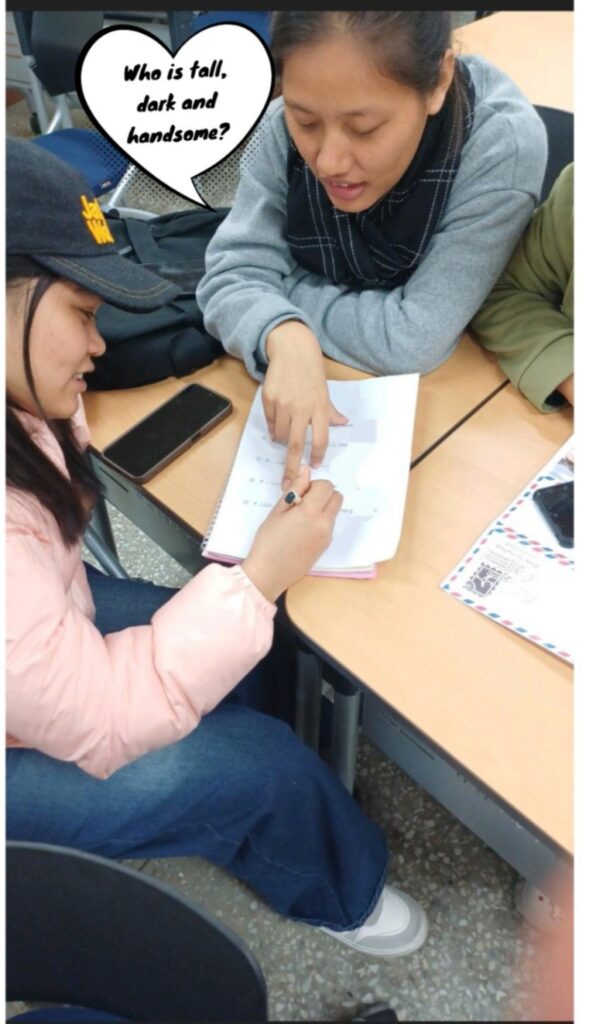
“My labrador!“
1. Shout Out Some Nouns
This exercise follows a similar format to the ‘Name it in three’ game. The basic format is the same, with the class divided into two or three teams of equal ability.
-To begin, a nominated guessing student from one team comes to the front and sits with their back to the board.
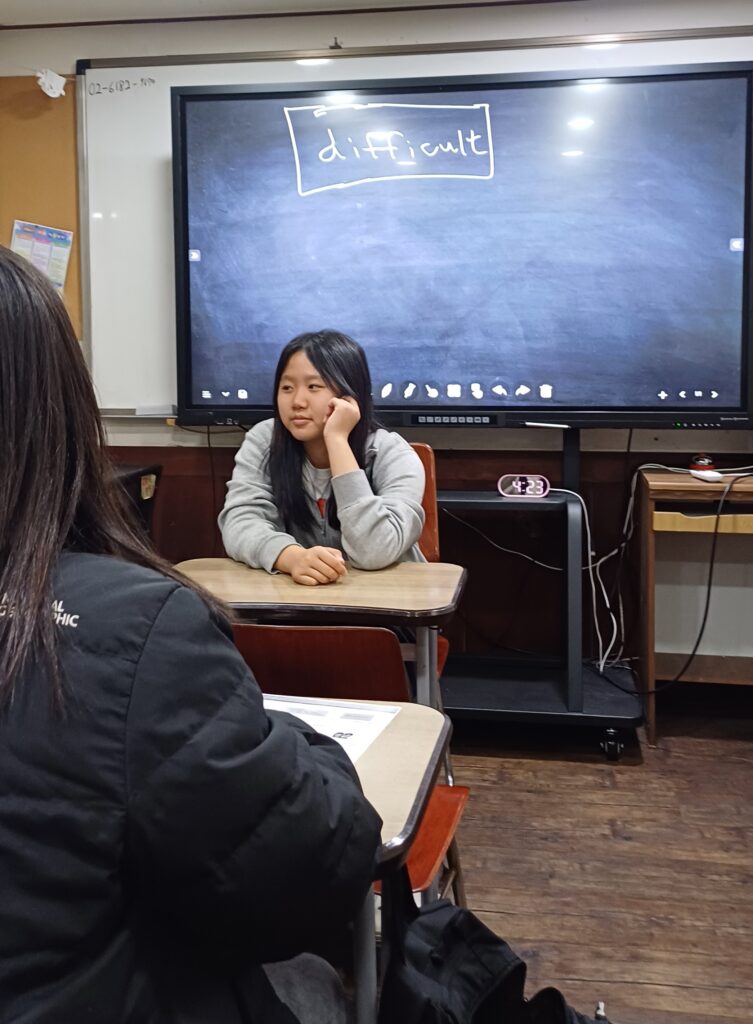
-The teacher has a list of adjectives ready.
-The teacher writes an adjective on the board. For example: difficult.
-The team then has to call out nouns they think have a good connection with the adjective.
-The guessing student listens to their team calling out these nouns and tries to guess the target adjective. If correct, the team scores a point, and the teacher writes up the following adjective.
-Each team has a set time ( *about 4-5 minutes) to get as many points as possible.
After each team member has had a few tries, the exercise is over, and the teacher tallies the scores to determine the winning team.
2. Adjective Scavenger Hunt
This is probably my favorite activity for practicing adjectives. However, I’m lucky enough to teach in a school with access to a large yard, a library, and a student kitchen. I also have an understanding boss. 😊 If you teach in a gray, windowless classroom, this activity may not be the best fit for you.
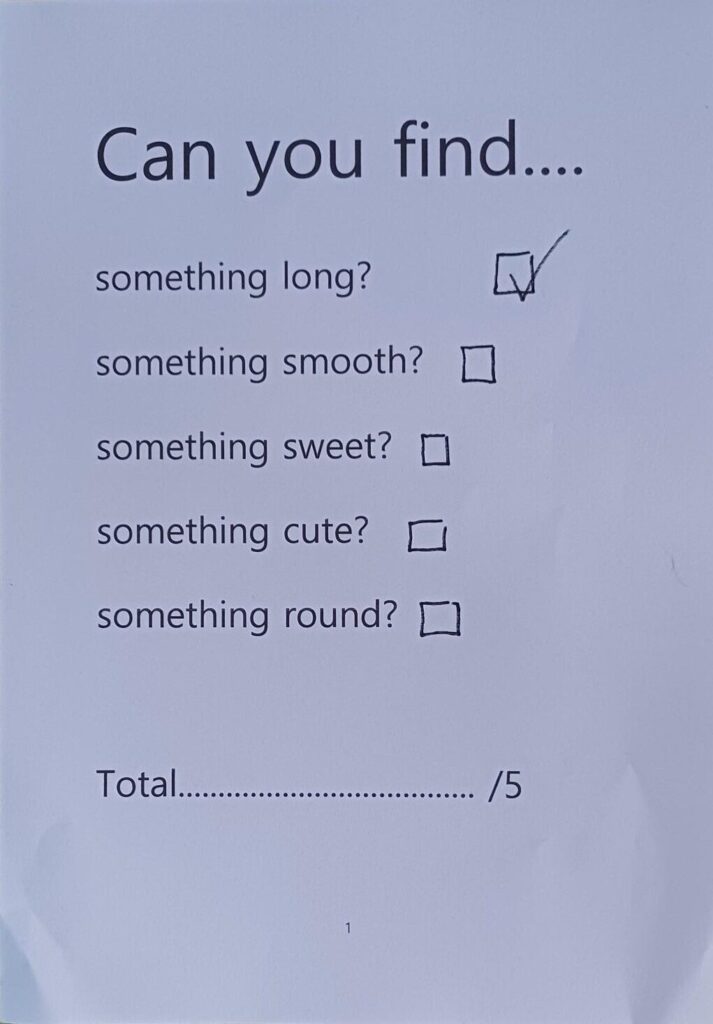
-For this exercise, the teacher writes out a list of things for the students to collect. However, instead of listing the objects themselves (as seen in a typical scavenger hunt), the teacher provides a list of instructions, as shown in the picture.
-The teacher divides the students into teams.
-Next, the teacher distributes a list to each student. ( I usually put the lists into envelopes )
-The students are instructed to open the envelope and read the instructions.
At the teacher’s command, they race off to find suitable objects that match the adjectives on the list.
Note: Students can become quite excitable during this exercise, so I like to establish a few behavioral ground rules before the action starts. I do this through ‘yes’ and ‘no’ concept-checking questions. For example:
Teacher: When looking for things, is it okay to run? No!
Teacher: Is walking quickly okay? Students: Yes!
Teacher: Is shouting and talking loudly okay? Students: No!
Teacher: Is whispering okay? Students: Yes!
Teacher: Is it okay to enter a classroom during a lesson? Students: No! (That’s happened before 🙄)
Teacher: Okay …..Ready ….Go!
3. Adjective Telepathy
This exercise aims to help students think of a suitable adjective to modify a noun. If the adjective they choose is the same as the teacher’s choice, they have good ‘telepathy’ (and gain a point).
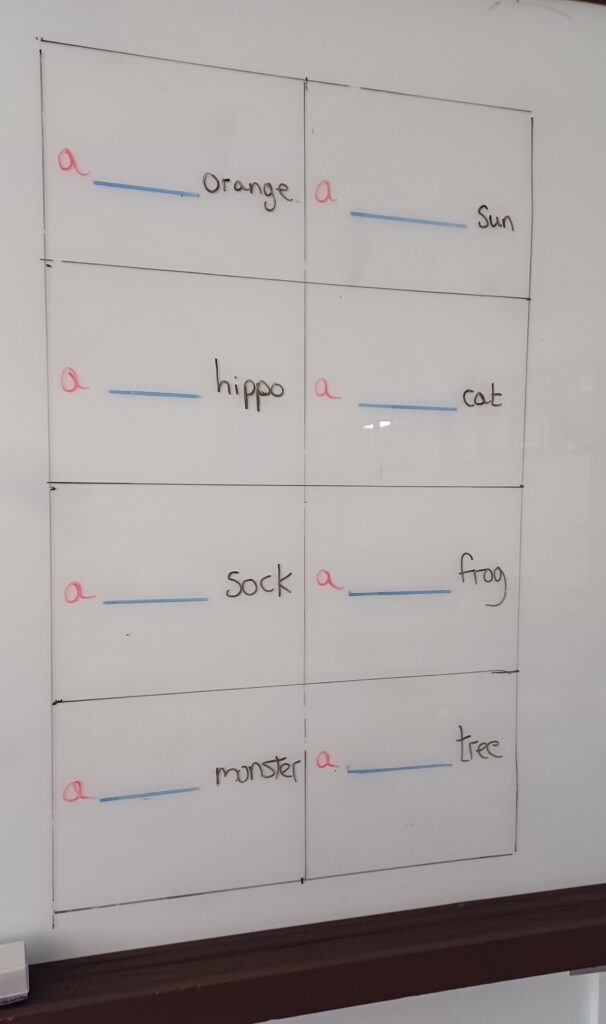
-To begin, the teacher draws an 8-box grid on the board.
-In the first box, the teacher writes the article (a/an) and a blank space, followed by a noun.
-The students do the same in their notebooks.
-The students must write down an adjective that they believe best describes the noun.
-If the students are struggling, the teacher can help them by providing a hint or two.
-The exact process is repeated for each box.
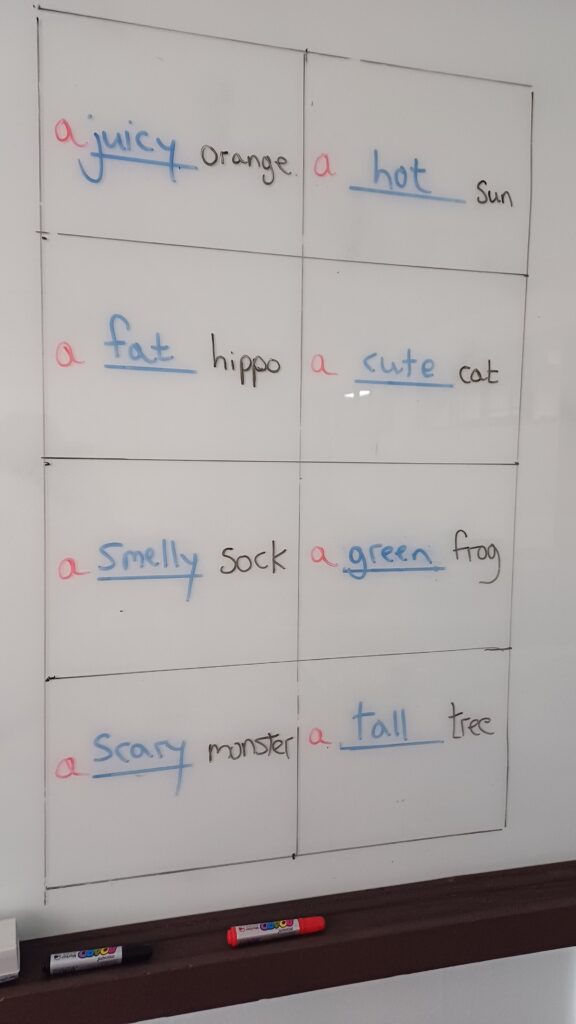
Once all eight boxes have been filled in, the teacher goes through each box, discussing adjectives that complement the noun well (for example, in the first box, a fresh orange, a delicious orange, etc.).
-Then the teacher ends the suspense and calls out their selected adjective.
Students with the same adjective as the teacher can check that box to earn a point.
-The student with the most points at the end of the exercise wins an expensive watch ⌚!…um, or whatever you are using for a reward.
-If two students tie the score, I sometimes have a quick playoff with one more noun….there can only be one winner!!)
4. Noun Telepathy
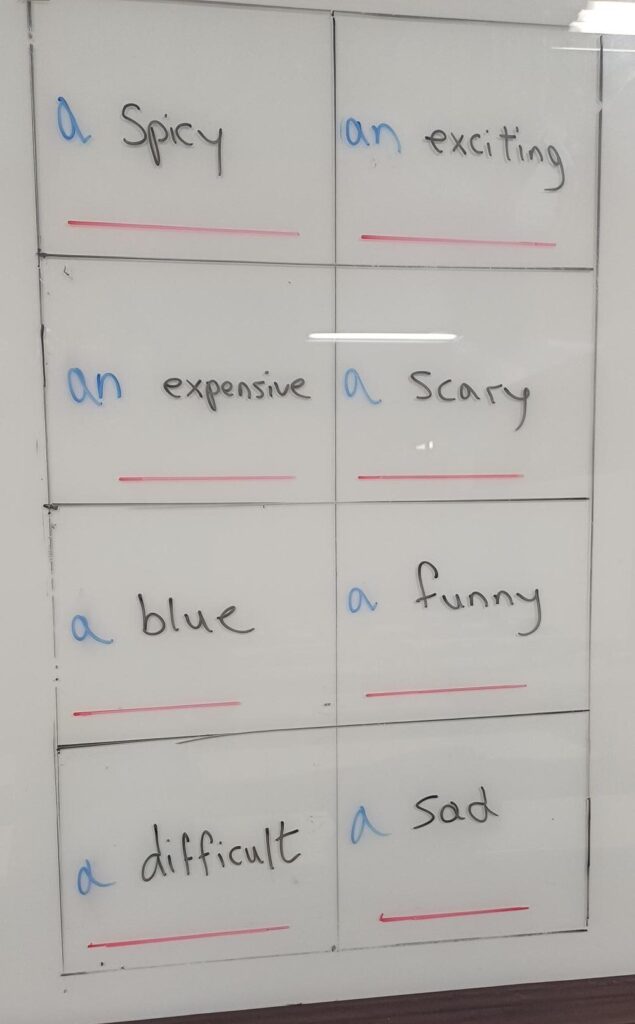
-This is a reverse version of the previous exercise.
-The aim here is for the students to attempt to have ‘telepathy’ with the teacher and choose a noun that complements the given adjective.
-The teacher draws the same 8-box grid on the board, and the students replicate it in their notebooks.
-This time, however, the teacher writes out an adjective and leaves a blank in the noun position.
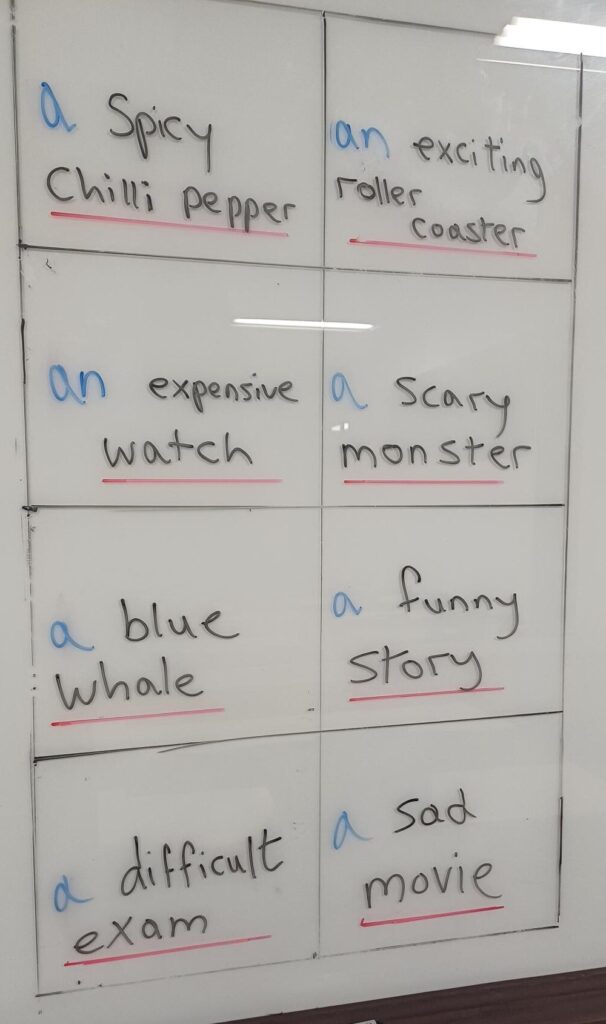
-The students must fill in the blank with a noun they think is modified by the adjective.
-There are far more nouns than adjectives (duh), so to get the students on the right track, the teacher can give hints about the target noun they are thinking of.
-As in the previous exercise, once all the boxes have been completed, the teacher works through each box and suggests a few nouns that are often paired with the adjective in the box. Finally, they call out the noun they have chosen.
5. ‘Name it in three!‘
No more than three adjectives usually modify nouns in English. For example:
‘A big, clear, blue sky’
So three is the magic number! This fun and challenging quiz game is suitable for higher-level classes. Teams aim to ‘help’ one of their members guess a mystery object by telling them three adjectives that describe it.
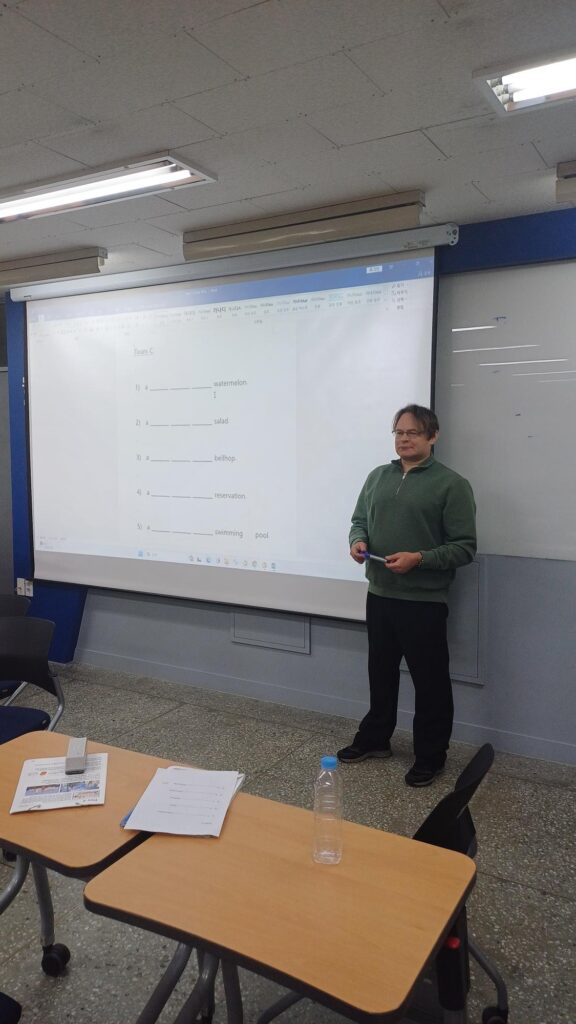
-To begin, the class is first divided into two or three teams.
-Each team nominates a team member to stand outside the classroom (no eavesdropping).
-The teacher then gives each team a sheet. Each sheet has five target nouns written on it. An article and three blanks precede the nouns.
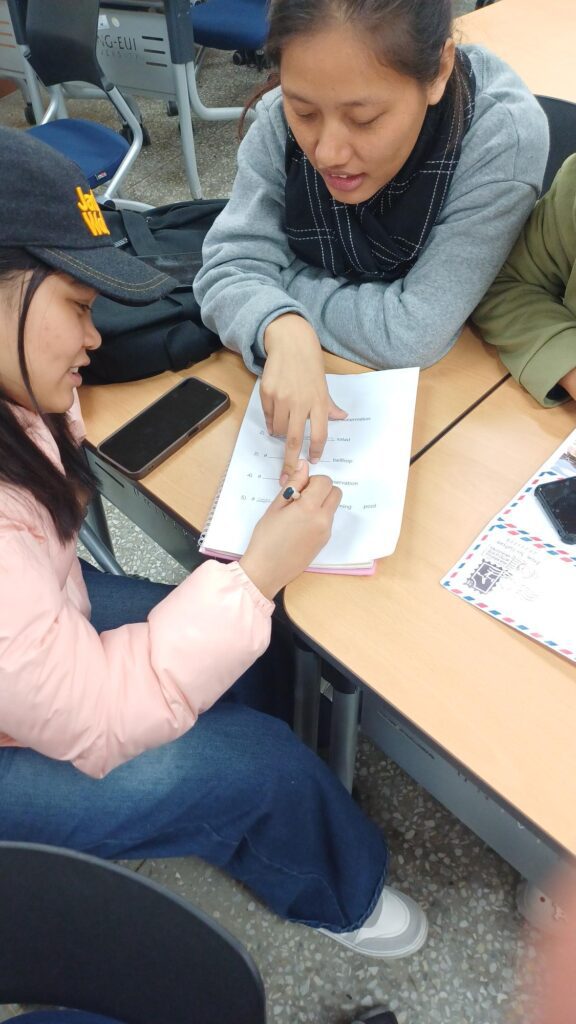
-The teams huddle together and choose three adjectives to best describe the target noun.
-During this time, the teacher monitors and guides the teams to ensure they are generating accurate adjectives.
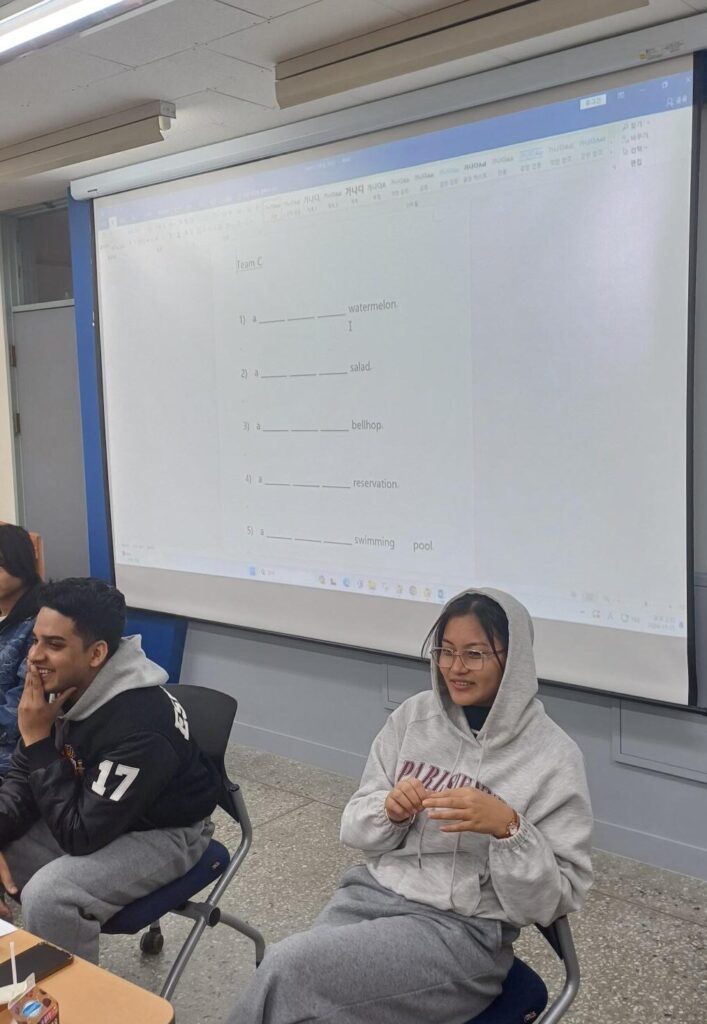
-Once all the teams are ready, the guessing students are allowed back in the classroom and sit with their backs to the board.
-For each of the five nouns, one team member calls out the three adjectives they have decided will help their team member guess correctly.
-If the student guesses correctly, their team gets a point. If they guess incorrectly, one of the students sitting from a different team is allowed to have a guess and steal a point for their team.
-After each team has described five nouns, the exercise is over, and the team with the most points wins. High fives all around!
Note: The Students sometimes ‘accidentally’ call out a helping noun or use body language. In this case, the opposing teams get a free guess.
*If you and your students had fun with these activities, check out my book. The Emergency English Teacher is packed with engaging activities for all student levels. It helps fill up that dreaded time at the end of a lesson.
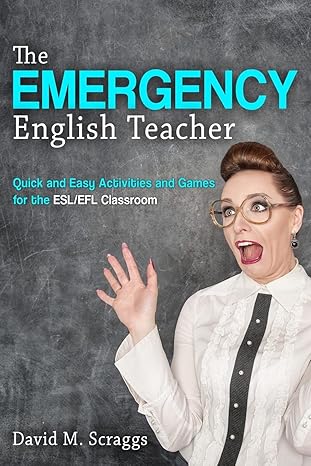
…………………………………………………………………………………………………………………………………………………………………………………………………………………………..
Now that the students have practiced using simple nouns and adjectives, it’s time to get them talking by describing their own rooms here.